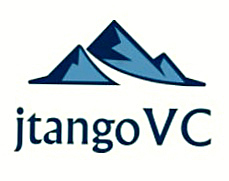Eric and I have been emailing this morning about a blog post on seed rounds (here) and how they’re getting larger. As the number of Series A check-writers has remained flat at best (and, down in some sectors) it’s forcing seed-stage companies to prove more momentum before they can raise a new round. So, they’re getting longer seed runways.
We’ve been seeing this trend in the marketplace the past few years. There just seems to be a “natural limit” as to how many companies can be funded. Whether that’s due to a cap on available VC dollars or the number of boards a VC can manage (my theory and a prior post on that here), it is what it is.
All this reminds me of two things.
First, it’s important to know the difference between a cycle and a trend. For example, a few years ago, seed investing exploded. VC firms were hiring associates to manage seed programs and there was furious check-writing from VCs, seed funds, and angels. Then, that stopped. There was a huge abundance of inventory, more than the Series A market could handle. Mortality rates soared.
Fast forward. Most VCs killed their official seed programs, although they still seed on occasion. Seed funds that had momentum greatly increased their fund sizes (needed in order to get more ownership, which drives fund returns) and, thereby…became VCs. Angels have been more selective.
In other words, the explosion of seeding was a turn in the cycle. There had not been a lot of seeding for a while, and the market filled the void. Then, there was “too much” seeding and the brakes were clamped down. The same pattern happened in 1998 and 1999, when seeding blossomed. The markets shut down in 2000 and 2001.
Second, wealth comes from concentration. As one of our investors, who manages billions of dollars, says: “You create wealth with a concentrated portfolio, and you protect it afterwards with a diversified one.” It’s a reflection of the CAPM theory in finance, and one that argues that risk and returns are correlated.
For entrepreneurs, that means starting a series of companies in a career, knowing that you won’t bat 1.000 but that one should be a significant outcome. In other words, you can ride many horses as a founder, and when you find one with momentum, ride it for as long as possible, as it may be the best horse you’ll have (prior blog post on that here). When you look at a successful founder’s track record, there will normally be one enormous hit–and, that’s it. It’s why we encourage our founders to shoot high and go public, if your company has the momentum.
For VCs, it is about having good ownership levels in companies and allocating dollars into winning companies. A high-volume seed strategy can be a great way to source investments for the Series A and beyond, but fund returns nearly always are based on a few winners in which you have high ownership. It’s about, therefore, a very concentrated portfolio on a dollars-weighted basis.
Owning small pieces of a bunch companies gives you a diversified portfolio, and most likely, low returns for the fund. As a famous seed fund founder told me as to why his next fund was much larger: “We had a $100MM exit. And, it didn’t move the needle on our fund because we owned so little.”
There’s no free lunch. Returns come from risk and the ability to manage away that risk. It means a concentrated portfolio, which requires a strong stomach and mental toughness in both entrepreneurs and VCs.
So, if you’re an entrepreneur who is raising money and having a hard time finding it, just remember that you’re playing a 20-year game. Your current company may or may not work out. But, with perseverance, one in the future should. Or, if your company is “killing it,” enjoy the moments and try to build a company that’s built for the long-term. It may be the best horse you’ll ever have.
